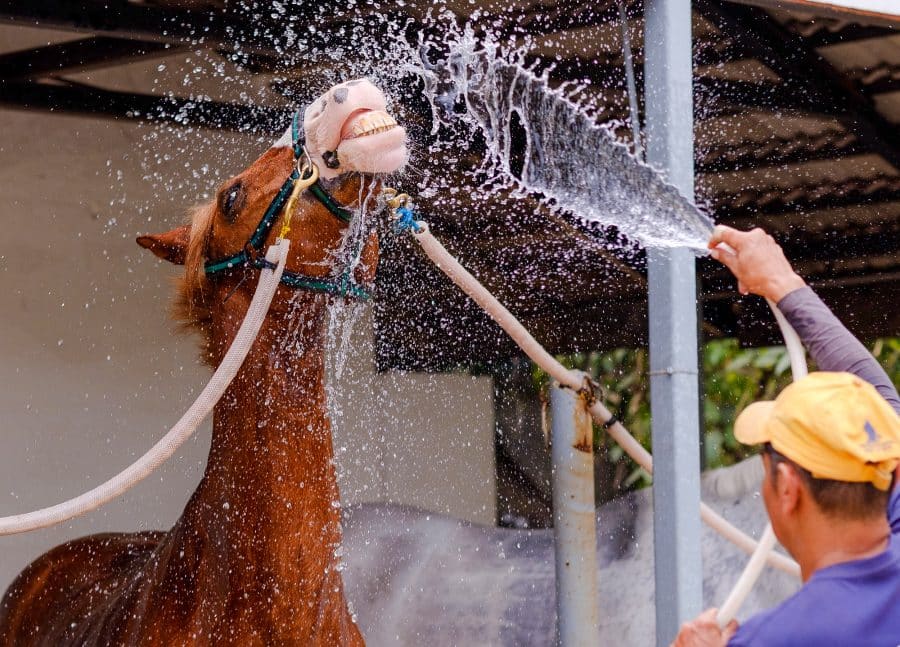How to Get Water to Your Horse’s Paddock
On the whole, horses are pretty resilient. One thing they can’t tolerate, however, is a lack of clean water. In recent years the price of…

On the whole, horses are pretty resilient. One thing they can’t tolerate, however, is a lack of clean water. In recent years the price of land in England has sky-rocketed – even scrubby land not suitable for housing development. Access to water is a factor that can drive up the price of land considerably, so it is common for buyers on a budget to wind up looking to install a water source themself.
If you have a parcel of land that doesn’t have access to water, but would like to keep your horses there (be sure to read our article on paddock planning laws) then there are several options open to you. When considering the best option for your setting you should focus on practicality, cost, and long-term benefit.
Getting a mains water supply to your field
This is typically the most practical method of providing access to water at your location. However, if you don’t already have a mains hook-up then you might find it is not possible/viable. To determine if it is practical to hook your site up to mains water reach out to your local water board, who will also be able to discuss pricing with you.
If you are set on linking your field(s) up to a mains water supply, but are overwhelmed or frustrated by the process, you can use a consultancy service. A consultant can perform independent viability assessments, as well as act as an agent. Atkins Global offer such a service.
Using a water bowser trailer
Depending on your circumstances, this might be a great option for you. A water bowser is a tank that hitches on to the tow hook of your car, allowing you to transport water to site.
Bowsers can be found for under £1000 new, however, if you’re prepared to properly sterilise the tank you might opt to buy second hand. Alternatively, rather than a purpose-built bowser tank, consider fixing a sterilised IBC tank into a standard trailer. If you already own a suitable trailer then the IBC route is likely to bring about large savings.
Bowsers are commonly filled up from a domestic water supply; domestic water costs are typically greater than agricultural rates. Therefore, before committing to bringing water on to site from a domestic supply it is vital you calculate how much the water will cost you. The cost of fuel for transport is also important.
Drilling a borehole to water a horse paddock
A borehole is similar to a well in that it provides access to an aquifer. Although expensive, if you have several fields then drilling a borehole can be an effective method to access water.
Aside from hiring a contractor to drill the hole, you must also apply for the appropriate licenses from your local authority. In England this includes permission to drill into an aquifer, and an extraction license; the amount of water you can pull from the aquifer in any one period is closely monitored to protect the aquifer from infiltration.
Once you have a borehole installed, water can be extracted with a pump. Most boreholes are deep, and therefore it is often impractical to use manual pumps. If you don’t have a mains electricity connection on-site then consider a petrol water pump. Alternatively, you could invest in a solar panel array, set of batteries, and inverter, although using a petrol water pump is the most cost-effective method.
Using water from a well
Water wells have provided man with clean drinking water for millenia. In most cases supply raw well water to your horse will be absolutely fine, however, many choose to have the water tested periodically; well water can harbour dangerous bacteria, including fecal coliform bacteria, which can harm your horse.
If you already have a well on your plot of land then it is probably the most cost-effective method of accessing water. If not, rather than dig a well, we strongly advise having a borehole drilled.
Unlike boreholes, most wells are relatively shallow, allowing manual pumping if required. A bucket on a rope can also be used. Of course, petrol and electrical methods might prove more practical if you’re moving a large amount of water regularly.
Using water containers in the boot of your car
The lowest cost option: filling up containers and transporting them in the boot of your car. Unless you have very sparing water requirements this is unlikely to be a fitting permanent fix, however, it works if other options are not available.
The most important thing to remember is that the containers you transport water in should be clear of contaminants; many containers start life as farm supplement receptacles.
There are countless ways of bringing water to a site without an existing source of water. Whichever method you chose, ensure that you are following local laws and the water you provide if safe for your animals to drink.